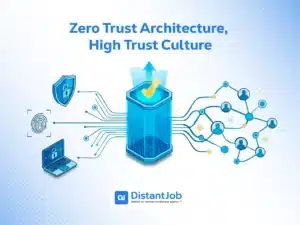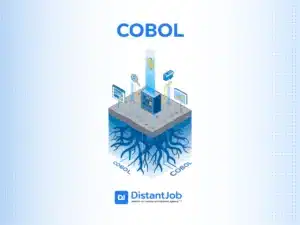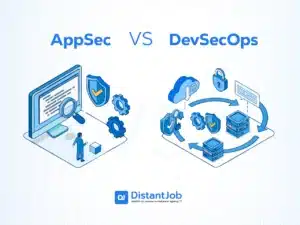Optimizing DevOps costs on AWS requires strategic implementation of resource management, automation, and continuous monitoring. Let’s face it: public clouds are expensive when you are scaling your services. Following proven practices helps maximize ROI while maintaining operational efficiency.
Gain a clear sight of your cloud spending and feel confident in managing your finances.
Accordingly to the Flexera State of Cloud Report 2025, the estimated cloud waste spend for this year is around 24%. Moreover, over-provisioning and idle resources are repeatedly identified as major causes of this waste.
Here is an article discussing best practices and strategies to reduce costs associated with using the vast set of AWS services employed to implement DevOps practices.
5 DevOps Cost Drivers on AWS
Before diving into solutions, we must know which DevOps activities in AWS need more cost optimization. Monitoring costs and resources is key. AWS enables swift DevOps execution and automation. However, without proper cost optimization, AWS becomes a waste of money.
1. Compute for Builds, Tests, and Deployments
Every pipeline action, build job, or test suite runs on compute (EC2 instances, AWS Fargate tasks, Lambda functions, etc.). These are billed per second or per request.
Example:
Teams often over-allocate Lambda memory or run EC2/Fargate tasks larger than necessary just to be safe. For this reason, AWS pricing for Lambda scales linearly with memory and duration; a 1 GB-configured function that uses only 100 MB still pays for 1 GB × execution time.
2. Storage and Artifacts
CI/CD pipelines generate build artifacts, container images, logs, and backups. If you don’t enforce lifecycle policies, these accumulate and incur ongoing storage costs.
Example:
A CI/CD pipeline uploads a new Docker image (5 GB) to Amazon Elastic Container Registry (ECR) with every pull request merge. The registry retention policy is set to keep all versions indefinitely.
After a year of frequent updates, ECR stores hundreds of redundant, multi-gigabyte container image layers that no longer serve a functional purpose but continue to accrue storage charges.
3. Networking and Data Transfer
Automation often involves moving data between services, regions, or availability zones. Indeed, AWS charges for data transfer, especially across AZ or region boundaries. Inter-region and cross-AZ data transfer charges surprise many DevOps teams. AWS charges $0.01–$0.02 per GB between AZs and up to $0.09 per GB between regions.
Example:
A distributed application uses a CI/CD process where the database is hosted in us-east-1 and the main application services are deployed to us-west-2.
The deployment script for the services downloads initial seed data (a large SQL backup file) from the database in us-east-1 to the application instances in us-west-2 during every deployment, resulting in significant recurring inter-region data transfer fees.
4. CI/CD Execution Time
Managed CI/CD services like CodeBuild, charged by the minute. Long-running or overly frequent builds/test runs directly increase your bill.
Example: A development team configures an AWS CodePipeline to run a full end-to-end integration test suite, which takes 35 minutes, immediately after every single code commit.
Since developers commit frequently, multiple concurrent and often redundant test runs are triggered daily, which increases the total billed execution minutes for the managed CI/CD service.
5. Forgotten Idle Resources
The #1 AWS budget leak. DevOps often creates ephemeral environments or resources for testing. If these aren’t cleaned up, they continue to accumulate costs.
Example: A team provisions an Amazon RDS Multi-AZ instance for a load-testing exercise that lasts one afternoon. After the test, they stop the associated EC2 load generators but forget to terminate the RDS database instance.
The database continues to run and bill for the expensive Multi-AZ configuration, backup storage, and I/O operations for several weeks until a budget alert is finally triggered.
The Six Core Principles of AWS DevOps Cost Optimization
Effective AWS DevOps Cost Optimization is a continuous mindset in daily workflows. Just as you continuously integrate and deploy code, you should also monitor and optimize costs. Here are some core principles to guide you:
1. Right-Size Container Resources
Define resource requests/limits carefully while using containers. Select the correct instance types and sizes for your applications, and use services like AWS Compute Optimizer to get recommendations. Over-allocating CPU or memory per container means packing fewer containers per node. It wastes capacity and drains your budget.
2. Increase Elasticity
The cloud scales resources up or down as needed, optimizing costs by turning resources off when they are no longer required to meet dynamic needs. Make it automated using features like Auto Scaling. For instance, you can save up to 75% of costs by using Saving Plans for Reserved Instances instead of Auto-Scaling on-demand, according to AWS Documentation.
3. Leverage the Right Pricing Model
Choosing the optimal pricing mechanism (On-Demand, Spot Instances, Reserved Instances, or Savings Plans) based on the workload’s predictability and flexibility needs. For example, you can save up to 90% when running fault-tolerant workloads with Amazon EC2 Spot Instances, says the AWS Documentation.
For predictable workloads, commitment-based pricing delivers substantial savings. Reserved Instances offer up to 72% discounts when you commit to a specific capacity for one or three years, making them ideal for steady-state production workloads.
Savings Plans offer similar discounts with added flexibility, letting you commit to consistent usage (measured in dollars per hour) while changing instance types, regions, or operating systems as needs evolve.
Spot Instances unlock the deepest savings, up to 90% off On-Demand pricing, by using spare EC2 capacity. They’re ideal for fault-tolerant, interruptible workloads like batch processing, big data analysis, and machine learning training. The tradeoff: AWS can reclaim capacity with just two minutes’ notice, making it unsuitable for critical or time-sensitive applications.
4. Optimize Storage
AWS offers two main categories for general data storage: Amazon S3 (Object Storage) and Amazon EBS (Block Storage), each with tiered options.
S3 is ideal for most cloud-native workloads, data lakes, backups, and archives. These classes balance cost, access speed, and availability.
| Data Type / Access Pattern | AWS S3 Storage Class | Cost-Effectiveness | Performance & Availability |
| Active, Frequently Accessed Data (e.g., dynamic websites, mobile/gaming apps) | S3 Standard | Moderate | High performance (millisecond access), highly available (stores data in ≥3 Availability Zones – AZs). |
| Data with Unknown or Changing Access Patterns (e.g., data lakes, new applications) | S3 Intelligent-Tiering | Highest Automatic Cost-Effectiveness | Automatically moves data to the most cost-effective tier (Frequent, Infrequent, Archive Instant Access, etc.) without performance impact or retrieval fees. |
| Infrequently Accessed Data that needs rapid access (e.g., backups, disaster recovery) | S3 Standard-Infrequent Access (S3 Standard-IA) | Lower Storage Cost | Same high performance (millisecond access) and multi-AZ resilience as S3 Standard, but with a lower storage price and a retrieval fee. |
| Infrequently Accessed, Re-creatable Data (e.g., secondary backups, easily regenerated content) | S3 One Zone-Infrequent Access (S3 One Zone-IA) | Lowest Cost for Infrequent Access | 20% cheaper than Standard-IA, but data is stored in a single AZ (less resilient to AZ loss). Has millisecond access and a retrieval fee. |
| Long-Term Archives are accessed rarely (e.g., compliance, regulatory archives) | S3 Glacier Instant Retrieval | Very Low Storage Cost | Designed for data accessed once per quarter. Provides instant, millisecond access with the lowest storage cost for this speed, but has a higher retrieval fee. |
| Long-Term Archives are accessed once or twice a year (e.g., tape replacement) | S3 Glacier Deep Archive | Lowest Overall Storage Cost | Cheapest storage class. Retrieval takes hours (typically ∼12 hours), making it suitable only for data that is rarely, if ever, needed. |
EBS volumes are persistent block-level storage for use with Amazon EC2 instances, typically for databases, boot volumes, and transactional workloads.
| Workload Type | AWS EBS Volume Type | Cost-Effectiveness | Performance & Key Feature |
| General Purpose SSD (most common, all-around use) | General Purpose SSD (gp3) | Highest SSD Cost-Effectiveness | Excellent balance of price and performance. Baseline 3,000 IOPS and 125 MiB/s throughput. 20% cheaper than GP2 and allows provisioning of IOPS/throughput independently of volume size. |
| High-Performance/Mission-Critical Databases (requiring very low latency) | Provisioned IOPS SSD (io2 Block Express) | Highest Cost | Highest performance, up to 256,000 IOPS and 4,000 MiB/s throughput. Provides the highest durability (99.999%). |
| Large, Sequential Workloads (e.g., big data, log processing, data warehouses) | Throughput Optimized HDD (st1) | Low (HDD) | Low-cost HDD for frequently accessed, throughput-intensive data. Performance measured in MiB/s, not IOPS. |
| Infrequently Accessed, Cold Data (e.g., large archives, backup repositories) | Cold HDD (sc1) | Lowest Overall Cost | Lowest-cost volume type. Designed for data that is infrequently accessed and where the lowest cost is paramount. |
5. Measure, Monitor, and Improve
Effective AWS Cost Optimization requires a continuous cycle of measurement, monitoring, and improvement. This approach ensures costs are kept in line with actual business value and utilization, not simply reduced at the expense of performance.
a. Measure: Establish Baselines and Visibility
To start optimizing, you need to understand what you’re spending and where those resources are being used.
| Action | Tools & Metrics | Detail |
| Implement Cost Attribution | AWS Cost Allocation Tags, AWS Cost and Usage Reports (CUR) | Define a consistent tagging strategy for all resources (e.g., project, owner, environment). This is crucial for allocating costs to specific teams, applications, or business units. |
| Analyze Current Spend | AWS Cost Explorer, AWS Budgets | Use Cost Explorer to visualize, filter, and analyze historical costs and usage. Identify the top cost-driving services and resources. |
| Define Cost Efficiency Metrics | Unit Cost (Cost-per-customer, Cost-per-transaction, etc.), Resource Utilization Rates | Move beyond total spend to unit economics. For instance, track the cost of delivering a core business output (e.g., cost per API call, or cost per active user) to measure true efficiency. |
| Identify Waste | AWS Trusted Advisor (Cost Optimization checks), AWS Compute Optimizer | Find idle resources (e.g., unattached EBS volumes, idle Load Balancers, unused Elastic IPs) and overprovisioned instances. |
b. Monitor: Track Progress and Detect Anomalies
Continuous monitoring is essential to ensure that optimization efforts stick and that unexpected costs or deviations are caught early.
| Action | Tools & Techniques | Detail |
| Set Up Budget Alerts | AWS Budgets, Amazon SNS | Create budgets for specific services, accounts, or tags. Set up alerts to notify relevant teams when actual or forecasted spend approaches a defined limit. |
| Track Resource Utilization | Amazon CloudWatch Metrics (CPU Utilization, Network I/O, etc.) | Monitor key performance metrics to identify underutilized resources that are candidates for rightsizing (e.g., consistently low CPU utilization on an EC2 instance). |
| Monitor for Anomalies | AWS Cost Anomaly Detection | Use machine learning to automatically detect unusual spikes or unexpected changes in your spending patterns and notify you of the potential issue. |
| Review Commitments | Cost Explorer Savings Plans/Reserved Instance Utilization & Coverage | Regularly check that your commitment purchases (Savings Plans or Reserved Instances) are being fully utilized to maximize the committed discount. |
c. Improve: Execute Optimization Strategies
The final step is to act on the data gathered to make changes that reduce costs without negatively impacting performance.
6. Leverage Cloud Financial Management (CFM)
Cloud spend is a strategic investment. Integrate cost awareness, set budgets, forecast, and create accountability into daily operations.
| Strategic Importance | Explanation |
| Maximizing ROI & Value | It is vital for optimizing cloud investments and ensuring that the cloud is a sustainable, scalable investment. It helps unlock the maximum value of IT investments and increases Cloud ROI. |
| Enhancing Financial Control & Predictability | It brings structure to dynamic spending. Effective tools help predict future AWS costs based on historical usage patterns, supporting accurate budgeting and preventing cost overruns. Organizations can avoid mid-cycle surprises. |
| Enabling Governance and Accountability | AWS cloud allows strong governance by enabling set budgets, establishing alerts, and creating policies around usage and spending. It enforces clear cost accountability, encouraging responsible cloud usage across departments. |
| Fueling Innovation | The savings generated from optimization efforts can be reinvested to fund new business initiatives, such as AI/ML adoption and application modernization projects. |
| Improving Resource Efficiency | Practices like right-sizing ensure that resources match workload requirements, helping to maintain performance without overspending. |
4 Key Practices for AWS DevOps Cost Optimization
Cloud computing is a game of balance. You want great performance and flexibility, but you also need to keep costs in check. The secret isn’t just cutting back; it’s practicing AWS DevOps Cost Optimization.
Think of AWS DevOps Cost Optimization as a continuous fitness plan for your technology budget. It ensures you stop wasting money on unused or oversized resources and, instead, strategically invest every dollar to drive maximum business value. Make intentional, informed trade-offs. Remember that going too cheaply can easily hurt performance or availability.
Here are the four most effective, battle-tested strategies to nail this balance.
1. Optimize Resource Utilization: Only Pay for What You Use
This is the most direct way to cut costs while maintaining or improving performance. The goal is simple: eliminate cloud waste.
A. Right-Sizing Instances (The Goldilocks Rule)
Stop paying for a Ferrari when all you need is a sedan! Right-sizing means continuously matching the size and type of your cloud resources (like virtual servers) to the actual needs of your workload.
Tools like AWS Trusted Advisor or AWS Compute Optimizer continuously watch your usage. If they see a server sitting at 10% CPU for a month, they recommend a much smaller, cheaper one that can handle the load just fine.
You reduce cost by strictly minimizing waste, but you maintain performance because the new, smaller resource is just right for the job.
B. Increasing Elasticity (The Cloud’s Superpower)
The cloud is inherently flexible, so use that! Elasticity means letting your resources expand when demand spikes (improving performance) and shrink back down when demand is low (saving money).
- Auto Scaling: This automatically adds capacity during peak hours and removes it when things quiet down. It ensures peak performance without permanently over-provisioning and over-paying.
- Scheduling: This is a quick win. Non-production environments (like development, staging, or QA) don’t need to run 24/7. Automatically shut them down on nights, weekends, and holidays. If a resource is asleep, you aren’t paying for it.
2. Strategic Use of Pricing Models: Pick Your Discount
AWS offers various ways to pay, letting you trade off long-term commitment for a significant cost reduction. The key is to analyze your usage patterns and select the best fit.
| Pricing Model | Best For | Cost-Benefit (The Discount) | Trade-off (The Commitment/Risk) |
| On-Demand | Unpredictable or temporary workloads (e.g., dev/test). | Maximum flexibility. Pay-as-you-go. | The highest cost over time if usage becomes sustained. |
| Savings Plans (SPs) | Consistent, baseline usage regardless of instance type. | Up to 72% off On-Demand pricing. | Long-term commitment (1 or 3 years) to a specific dollar amount of hourly spend. |
| Reserved Instances (RIs) | Predictable, sustained workloads. | Up to 72% off On-Demand pricing. | Long-term financial lock-in (1 or 3 years) to a specific instance attribute (e.g., t3.large in us-east-1). |
| Spot Instances | Fault-tolerant, interruptible work (e.g., batch processing, ML training). | Extreme discounts: Up to 90% off! | Low reliability; AWS can reclaim the instance with only a two-minute warning. |
3. Continuous Monitoring & Automation: Stay on Top of Spending
Cost optimization isn’t a “set it and forget it” project; it’s an ongoing discipline. Automation makes cost control systemic and prevents small issues from becoming budget disasters.
A. Automated Discount Management
Platforms exist to take the headache out of managing RIs and SPs. These automated tools dynamically manage the lifecycle of your commitments, ensuring you always maximize your savings while minimizing the risk of paying for unused capacity.
B. Proactive Cost Governance
You need an early warning system for spending.
- Cost Anomaly Detection: Uses machine learning to continuously monitor your spending patterns and automatically alert you the moment it sees unusual cost spikes. Moreover, this catches problems before they become major bills.
- AWS Budgets: Allows you to set custom spending limits and receive notifications when you get close to exceeding them.
C. The Culture of FinOps
True success requires making cost-consciousness a shared responsibility. Therefore, when engineers, finance, and operations teams work together (a practice called FinOps) everyone owns the cloud budget. Engineers should get cost feedback on their choices as they build, enabling them to make performance trade-offs that are cost-efficient right from the start.
4. Optimizing Storage and Data Transfer
Don’t forget the underlying architecture—storage and networking costs can sneak up on you!
A. Storage Tier Optimization
Data is not all created equal. You shouldn’t pay premium prices for data you rarely touch.
Automate your storage optimization with two approaches:
S3 Lifecycle Policies move older data to cheaper storage automatically. Set rules once, and AWS transitions your aging files to lower-cost tiers like S3 Glacier without manual intervention. It’s perfect when you know your data access patterns, for example, moving files older than 90 days to archive storage.
S3 Intelligent-Tiering works as a hands-free solution that monitors how frequently you access each file. It automatically shifts data between storage tiers based on actual usage patterns, ensuring you always pay the lowest rate possible. It’s ideal when access patterns are unpredictable or constantly changing.
The result: Significant storage cost reductions without sacrificing data availability or spending time on manual management.
B. Data Transfer Optimization
Those data transfer charges (often called “egress” charges when data leaves the cloud) can get costly.
- Stay Local: The simplest solution is to deploy your resources within the same region or Availability Zone whenever possible, as data transfer between these locations is often free or heavily discounted.
- Use a CDN: Leveraging a Content Delivery Network like Amazon CloudFront caches content closer to your users, reducing the amount of data you have to pull directly from your main cloud storage, thereby cutting down on egress charges.
AWS Native Tools and Services for Cost Optimization
Many tools support AWS DevOps Cost Optimization by integrating directly with AWS services and offering mechanisms for cost control, monitoring, and rightsizing recommendations. AWS adopts the term “cloud financial management” to describe this process, involving a range of services and optimization techniques beyond simple cost management.
1. Tools for Visibility, Analysis, and Reporting
These tools provide the necessary insights to understand spending patterns and identify cost drivers.
| Tool/Service | Primary Function | Specific Details/Actions |
| AWS Cost Explorer | Visualization, analysis, and forecasting of AWS costs and usage. | Users can review historical costs, forecast future expenses, and identify spending trends by service, account, and region. |
| AWS Billing and Cost Management Console | Primary interface for managing AWS costs, tracking, and reporting. | Provides a comprehensive view of spending, including a dashboard summary and detailed cost and usage reports categorized by service, account, and region. |
| AWS Cost and Usage Report (CUR) | Granular, line-item cost and usage data for deep analysis. | Detailed insights for custom dashboards, tracking unit economics, or integrating with FinOps platforms. |
| AWS Pricing Calculator | Pre-deployment planning and cost estimation. | Allows users to estimate the monthly cost of use cases on AWS, model solutions before building them, and explore pricing points for informed decision-making. |
2. Optimization and Rightsizing
These services use data-driven insights and automation to match resources with actual requirements, eliminating waste.
AWS Trusted Advisor provides real-time recommendations to identify underutilized resources, rightsize EC2 instances, and optimize Reserved Instance purchases.
AWS Compute Optimizer takes this further by using machine learning to suggest optimal configurations for EC2 instances, EBS volumes, Auto Scaling groups, and Lambda functions based on historical usage patterns.
Automation drives continuous savings.
AWS Instance Scheduler automatically starts and stops EC2 and RDS instances during off-hours, essential for non-production environments that don’t need 24/7 availability.
Auto Scaling Groups dynamically adjust compute capacity based on real-time demand, eliminating over-provisioning for peak loads.
Amazon CloudWatch monitors resource utilization metrics, such as CPU, memory, and disk I/O, to identify optimization opportunities and trigger automated responses.
Storage optimization happens automatically with S3 Lifecycle Policies, which transition aging data to lower-cost tiers like Glacier. For unpredictable access patterns, S3 Intelligent-Tiering continuously analyzes usage and automatically moves data between storage classes, ensuring optimal costs at all times.
3. Governance, Control, and Proactive Management
Three AWS tools provide comprehensive cost oversight and control. AWS Budgets sets spending alerts and automated actions when costs exceed thresholds across services, accounts, or usage types. On the other hand, AWS Cost Anomaly Detection uses machine learning to identify unusual spending spikes and sends alerts to prevent unexpected costs. Finally, AWS Cost Optimization Hub centralizes all cost recommendations—including rightsizing, idle resources, and reserved instances—in one dashboard, eliminating the need to switch between multiple tools.
4. Pricing and Commitment Management
AWS offers native pricing strategies that deliver substantial savings without requiring additional tools. Reserved Instances and Savings Plans provide up to 72% discounts for predictable workloads in exchange for one- or three-year commitments, making them ideal for steady-state applications.
Spot Instances leverage spare EC2 capacity to offer up to 90% savings for fault-tolerant, interruptible workloads like batch processing, data analysis, and testing environments.
Conclusion
The journey to effective AWS DevOps Cost Optimization isn’t a one-time fix. You have to do it continuously. As the Flexera Report highlighted, cloud waste is a pervasive problem, often stemming from preventable issues like over-provisioning and forgotten idle resources. You can dramatically reduce your cloud bill and maximize your return on investment by:
- Right-sizing your compute resources (following the Goldilocks Rule).
- Leveraging elasticity and automation to match capacity with real-time demand.
- Strategically selecting pricing models (Spot Instances, Savings Plans, and RIs) to match your workload’s predictability.
- Optimizing storage by implementing S3 Lifecycle Policies and leveraging Intelligent-Tiering to move cold data to the lowest-cost tier.
In short, by viewing every dollar spent as a strategic investment and making intentional trade-offs between cost and performance, your organization can stop funding waste and instead reinvest savings into fueling innovation and accelerating the delivery of true business value.
But, hey. I want to ensure this is delivered in the most actionable format for your company. Would it be helpful to get a pre-vetted DevOps Engineer who understands everything about Cloud Cost Optimization (also known as FinOps)? It doesn’t have to be limited to AWS; you can find an expert on Azure, Google Cloud, or even a Multi-Cloud expert.
Schedule a meeting now with our recruitment team, and let’s find together the remote engineer of your choice!





